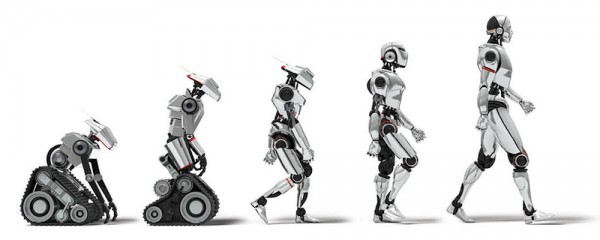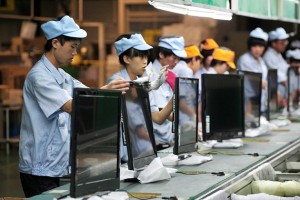09
Sep 2015
MADE IN CHINA 2025 AUTOMATION
Every country has its longterm planning for the future. Speaking of which, what about China’s future planning for the next 10 years?
The Idea
The Chinese government has made a “Made in China 2025” initiative for its long term planning. Some say there are too many obstacles in this ambitious plan, but others say that the entry of China into the global manufacturing market as a player that offers more than low-cost labor is a very good step to create a truly global competitive market.
Despite all the comments, one thing for sure, there is 1 industry that will be affected, I mean, will have a BIG impact with the agenda. It is the robotics industry. The robotics industry won’t be the same. Just as China seeks to – in the words of Premier Li Keqiang – “upgrade China from a manufacturer of quantity to one of quality,” so, too, will industrial robots move from being solely for volume output to an integral piece of the production value chain.
The Reason Behind It
The Chinese government is in good company when it comes to advocating and investing in the vision for a new industrial revolution. It plans to spend more than 8 trillion yuan (nearly $1.3 billion) over 10 years on its Made in China 2025 initiative, focusing on 10 sectors ranging from agricultural and electrical equipment to transportation equipment and medical devices. On the other hand, Germany launched Industry 4.0 in 2013 and is expected to invest 1.35 trillion Euros (nearly $1.5 trillion) over 15 years on transforming its manufacturing base.
The reason why they invest so much money in those kind of projects is because manufacturing is the only most effective way to activate an economy. In the U.S., every $1 spent in final sales of manufactured products supports $1.33 in output from other sectors. Building an economy based on factories of the future, where people work on value creation and innovation and machines do the rest, is a powerful engine for any nation.
It’s Not About the Low-Cost Labor Models Anymore
Thanks to China, we can enjoy the inexpensive, low-quality clothing, toys and other goods on the backs of low-paid workers. But now, rising wages in China and competitive pressures on low-cost labor from other regions, including South America and Eastern Europe, are at the main reason of the rationale behind the Made in China 2025 plan.
At the same time, U.S. and European manufacturers have come to realize that it’s simply no longer viable to compete by chasing low-cost labor. Rising wages, combined with a volatile global economy, increasing product complexity and changes in consumer expectations around customization for everything from cell phones to luxury vehicles are forcing manufacturers to rethink supply chains and find ways to tighten the gap between innovation and product delivery.
The Third Industrial Revolution
Some analysts came up with the idea of Third Industrial Revolution, where manufacturing moved from mass production to mass customization. In the factories of the future, the authors wrote, 3-D printing, more dexterous robots and a range of Web-based services would make it possible for manufacturers to be able to respond quickly to changes in demand and deliver smaller lots tweaked with customer preferences. It’s these types of operations – flexible, highly responsive to shifts in economic conditions and consumer demand, and driven to continuous improvement – that China, the United States, Germany and other industrialized nations are seeking to design, build and operate.
The Smart and Collaborative Robot
Big, immovable, expensive and able to perform highly repetitive tasks involving heavy objects, these robots were designed to lower the cost of manufacturing and increase productivity. And they have for many industries. But manufacturing has changed significantly and is no longer solely about building millions of units, all exactly the same.
Today, lines are likely to be reconfigured from shift to shift. In contract manufacturing environments, which produce nearly 100% of electronic goods, many varieties of products are created in the same operation. In distribution centers, where consumer goods products are packaged for delivery to retail outlets, the tasks change based on the latest promotional campaigns. In these environments, fixed robots are not up to the challenge of “different day, different task.” For a fixed robot to perform a task significantly different than the one it was first designed to perform would require weeks or months of reprogramming and reconfiguring, significant investment and a technician trained in robotics programming.
What’s needed and what will ensure that China – and any other nation pursuing the vision of the factory of the future – will reap the rewards of digitized manufacturing is a new breed of smart, collaborative robot. The market for these robots has been estimated to surpass $3 billion by 2020, and China’s ambitious Made in China 2025 campaign will indeed be a force behind this expansion.
Collaborative robots bring more to manufacturing than just being safe enough to work alongside humans. China’s vision to replace human workers with robots depends solely on the ability of robots to perform tasks as humans do. That means that robots must be able to perform:
1. More than a single task, and be able to shift between tasks without additional programming.
2. Increasingly agile tasks.
3. Without interruption in the face of the variability inherent in today’s manufacturing environments.
 Sawyer, the newest smart and collaborative robot
Sawyer, the newest smart and collaborative robot
How Do Robots Change Our Life
Advances in robotics technology have paved the way for a new breed of robot that delivers entirely new ways of performing the 90% of physical tasks that have been outside the reach of traditional robots. These collaborative robots are already being deployed by world-class manufacturers in electronics, industrial equipment and white goods, as well as by innovative players in sheet metal fabrication, home furnishings and plastics.
These innovations, combined with the visions articulated in the Made in China 2025 plan, Germany’s Industry 4.0 initiative and other efforts around the world make it more exciting than ever to be in manufacturing and industrial robotics. This future holds great promise for revitalizing manufacturing anywhere in the world.
“Technology is a useful servant but a dangerous master – Christian Lous Lange”
Source : Industry Week
Contact us at www.sbeinspection.com for more information about China inspection services



































